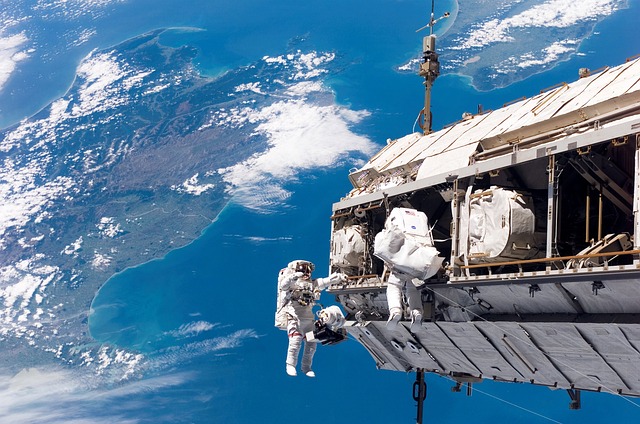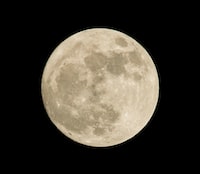The University of Central Florida, led by Associate Professor Ranajay Ghosh, recently created 3D-printed lunar regolith bricks that can withstand the extreme environments of space and are a good candidate for cosmic construction projects. The loose dust, rocks, and materials that cover the moon’s surface are referred to as lunar regolith.

Associate Professor Ranajay Ghosh of UCF’s Department of Mechanical and Aerospace Engineering commented on the new development saying, “It is always an honor to be able to publish our work in a prestigious journal such as Ceramics International, and we are quite delighted that New Scientist picked our research to publish in their magazine. Considering UCF’s special place as a space-grant university, we feel privileged to contribute to the great tradition of scientific knowledge.”
Recent discoveries on the moon

Reveal the presence of hydrogen, oxygen, and other elements that can be extracted from the regolith for fuel and water. This new 3D-printing method can turn lunar regolith into bricks that can be used to construct structures within extreme lunar environments. These regolith bricks do not require energy for production because the lunar environment can harden the materials. In the lab, the team found that the bricks could withstand lunar-like heat, humidity, and vacuum conditions.
Cosmic bricks are three times stronger.
Then concrete in terms of compressive strength. They can be used to build houses and other structures on the moon and Mars. A kg of the material costs less than a dollar. (Source: www.news.ucf.edu)
The 3D-printed lunar regolith bricks that can withstand the extreme environments of space and are a good candidate for cosmic construction projects from the loose dust, rocks, and materials that cover the moon’s surface are referred to as lunar regolith. The bricks are three times stronger than concrete in terms of compressive strength. They can be used to build houses and other structures on the moon and Mars. A kg of the material costs less than a U.S. dollar. (Source: www.news.ucf.edu)
His team worked with NASA’s Kennedy Space Center.
To create the engineers who said they were strong enough to build human shelters on distant worlds or on the moon. The engineers have been using NASA’s 3D-printed lunar regolith bricks to make a protective cover for the Mars 2020 rover to protect it during entry, descent, and landing.
“The application is not only limited to the moon, but it can also be used to construct a long space-flight crew habitat, and it can also be used to protect astronauts from hazardous conditions on other planets during their stay,” the university said in its press release.
“Our materials are strong enough to build a space crew habitat, but they are also lightweight and have high thermal stability,” Ghosh said. “We have also demonstrated that our materials can block harmful cosmic radiation and provide adequate protection for astronauts on long space missions.

The material is known to be frozen and abrasive, made of small, sharp particles that can quickly break down equipment and ruin air filters. The new bricks, with an egg-carton-like surface, could be used to build potential habitats and other structures on the moon.
“It’s really difficult to make regolith stick to each other,” Ghosh said in a news release. “They’re just tiny particles, and when you try to print with them, about 60 to 65 percent of the materials escape.”
Ghosh, along with Assistant Professor Amir Behkami and graduate student Chenchen Ding created two types of lunar regolith bricks:
- One formed with a design similar to the molding method of bricks;
- And a second that used a lattice-like 3D-printed formula to preserve the regolith’s original structure but serves as a stronger foundation.
The regolith is a highly porous, lightweight material. Ghosh’s team used lunar regolith simulants in the making of their bricks. The simulants are ideal substitutes for the real thing since they’re created with materials similar to those that make up the regolith. Ghosh’s team used a selective laser melting process (SLM) to print the bricks.
This process uses a laser beam to build up layers of materials based on a computer-aided design model. The resulting bricks were strong and durable enough to be used in construction. The bricks also withstand high temperatures and sudden changes from daylight to darkness on the moon. Source:Phys.org
 The moon is ideal for 3D-printed construction for several reasons.
The moon is ideal for 3D-printed construction for several reasons.
First, the moon has no water, which makes it difficult for crew members to drink, but it also prevents the formation of dirt, debris, and mold. The moon’s atmosphere is also fragile and dry, preventing ice formation. These factors make it possible for the moon to be printed on.
Second, the moon has shallow gravity, which makes it easier for construction materials to be lifted into space.
Third, the moon’s surface is dust, which is ideal for 3D printing. The dust can be used as a construction material, and it can also be used to create a smooth surface for the printer to work on.
The team tested their lunar bricks by printing them on a 3D printer and testing their strength. Researchers have used 3D printing using laser-Melted regolith to produce two types of lunar bricks: uncoated and coated.

The team found that the bricks when stacked on top of each other, create a structure as strong as concrete. On top of that, the bricks can withstand the harsh environment of space.
“This work opens the door for future moon missions that can use resources found on the moon’s surface,” said Adrian Ponce, a postdoctoral researcher at Stanford University, in a statement.
“The ability to 3D-print with regolith could enable construction of permanent lunar outposts where astronauts could live and work.”
The team used a laser beam to fuse the regolith into bricks. The result was a structure with a “honeycomb-like” quality. The team also considered that the moon is mainly covered in grey dust, so they made the bricks grey in color. The moon’s surface also contains a lot of iron, reflected in the iron-rich grey color.
The team also guaranteed that the bricks were the same size and shape as those used on Earth, making it easier for builders to use them. The team is now working on the second generation of bricks, which will be made from a broader range of materials, including concrete and glass.
Conclusion,
“We’re growing the technology to include more materials that aren’t normally found in brick,” states Vahid Paivar, the team’s project manager. “In theory, you could use any earthly material in that recipe to produce a brick.” That could allow future Mars settlers to use slag – the waste product from steelmaking – to build their homes.
While the team is working on agricultural and automotive applications, they acknowledge that bricks are the product that is most likely to get to Mars first. “The thing that has the most potential to get to the market first is the brick,” says Paivar. “We’re quite optimistic that bricks will be one of the first things to be used.”
The Mars brick machine could also prove beneficial here on Earth.
A company in India has taken on Mars by creating a machine that can turn carbon dioxide into bricks. According to the researchers, the machine makes bricks using the Mars atmosphere. The device uses carbon dioxide to create a solid object, which can be used to build structures on the Martian surface. This technology could make a base on Mars and build a city on the planet’s surface. To be continued.
Can You Help?
We ask for your help in leaving us a comment about the article. It’s easy to do and only takes a few minutes. We appreciate your feedback. Thank you!
Bullwinkle

